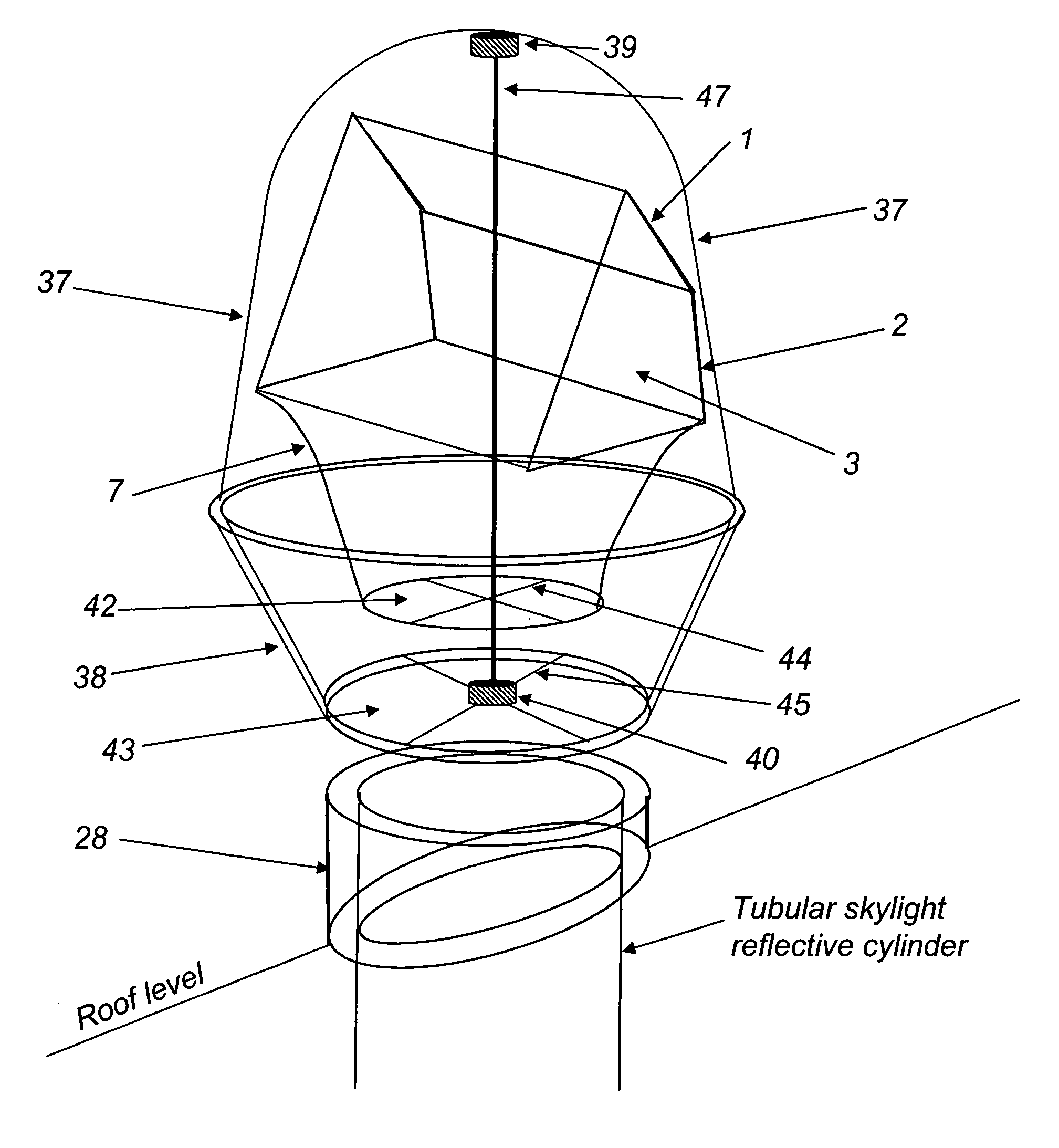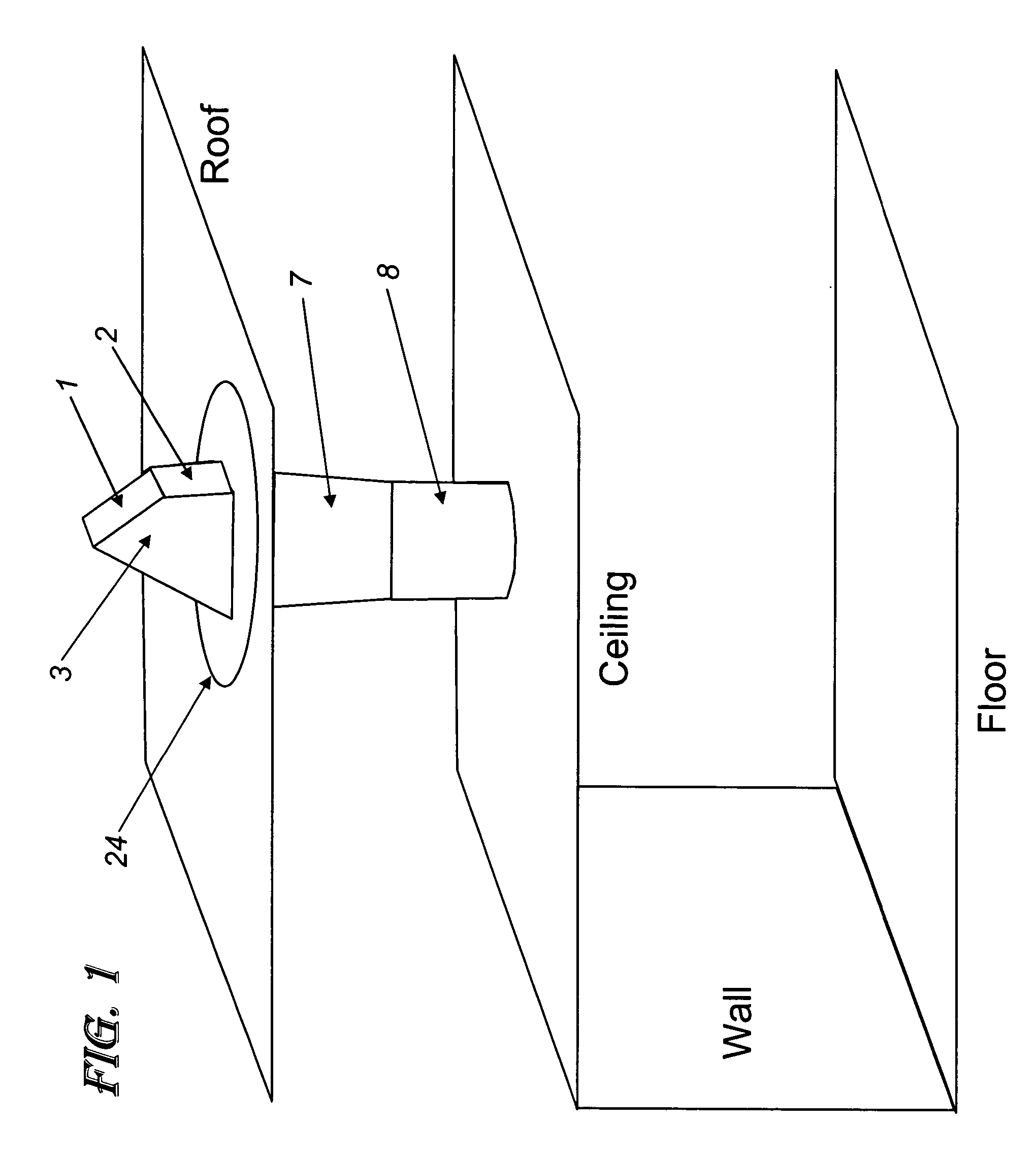Direct beam solar lighting system
a solar lighting and direct beam technology, applied in lighting and heating equipment, instruments, lighting and other directions, can solve the problems of large aperture areas not being moderated, solar overheating, adding to the cost and complexity of installation, etc., to achieve constant illumination, increase throughput, and accentuate the capture and distribution of sunlight.
- Summary
- Abstract
- Description
- Claims
- Application Information
AI Technical Summary
Benefits of technology
Problems solved by technology
Method used
Image
Examples
fifth embodiment
[0155]FIG. 19 provides a side view schematic illustration of this fifth embodiment of the invention. The base of the sleeve 28 fitting over a tubular skylight reflective cylinder is sealed to the roof through the use of roof flashing 30, using any of a variety of flashing techniques commonly known to roofing technicians. If needed and used, sleeve 28 is made of material strong enough to support the solar collection head and its rotating mechanism as well as to hold it tightly to the building in the event of high winds. This modification enhances the performance of the tubular skylight by increasing illumination levels at all sun angles, but preferentially more at low sun angles, making the light level in the space below more uniform throughout the day. With its larger solar collection aperture 4, tracking ability, and other design features, the added tracking head delivers more light to the light pipe 8 and improves the tubular skylight performance all day long.
[0156] Alternatively,...
sixth embodiment
[0157]FIG. 21 provides a side view schematic illustration of this sixth embodiment of the invention. The base of the sleeve 28 fitting over a tubular skylight reflective cylinder is sealed to the roof through the use of roof flashing 30, using any of a variety of flashing techniques known to roofing technicians. If needed and used, sleeve 28 is made of material strong enough to support the solar collection head as well as to hold it tightly to the building in the event of high winds. This modification allows for very simple upgrades from a simple upwards-facing dome which is standard with tubular skylights to an active tracking system. All moving parts are protected from damage during installation or following installation from the effects of weather. By having all of the parts pre-assembled within the transparent dome, both the number of steps and the precision required for roof-top mounting are greatly reduced.
[0158] Instead of using diffusers at the bottom of the light pipe, retr...
PUM
 Login to View More
Login to View More Abstract
Description
Claims
Application Information
 Login to View More
Login to View More - R&D
- Intellectual Property
- Life Sciences
- Materials
- Tech Scout
- Unparalleled Data Quality
- Higher Quality Content
- 60% Fewer Hallucinations
Browse by: Latest US Patents, China's latest patents, Technical Efficacy Thesaurus, Application Domain, Technology Topic, Popular Technical Reports.
© 2025 PatSnap. All rights reserved.Legal|Privacy policy|Modern Slavery Act Transparency Statement|Sitemap|About US| Contact US: help@patsnap.com



